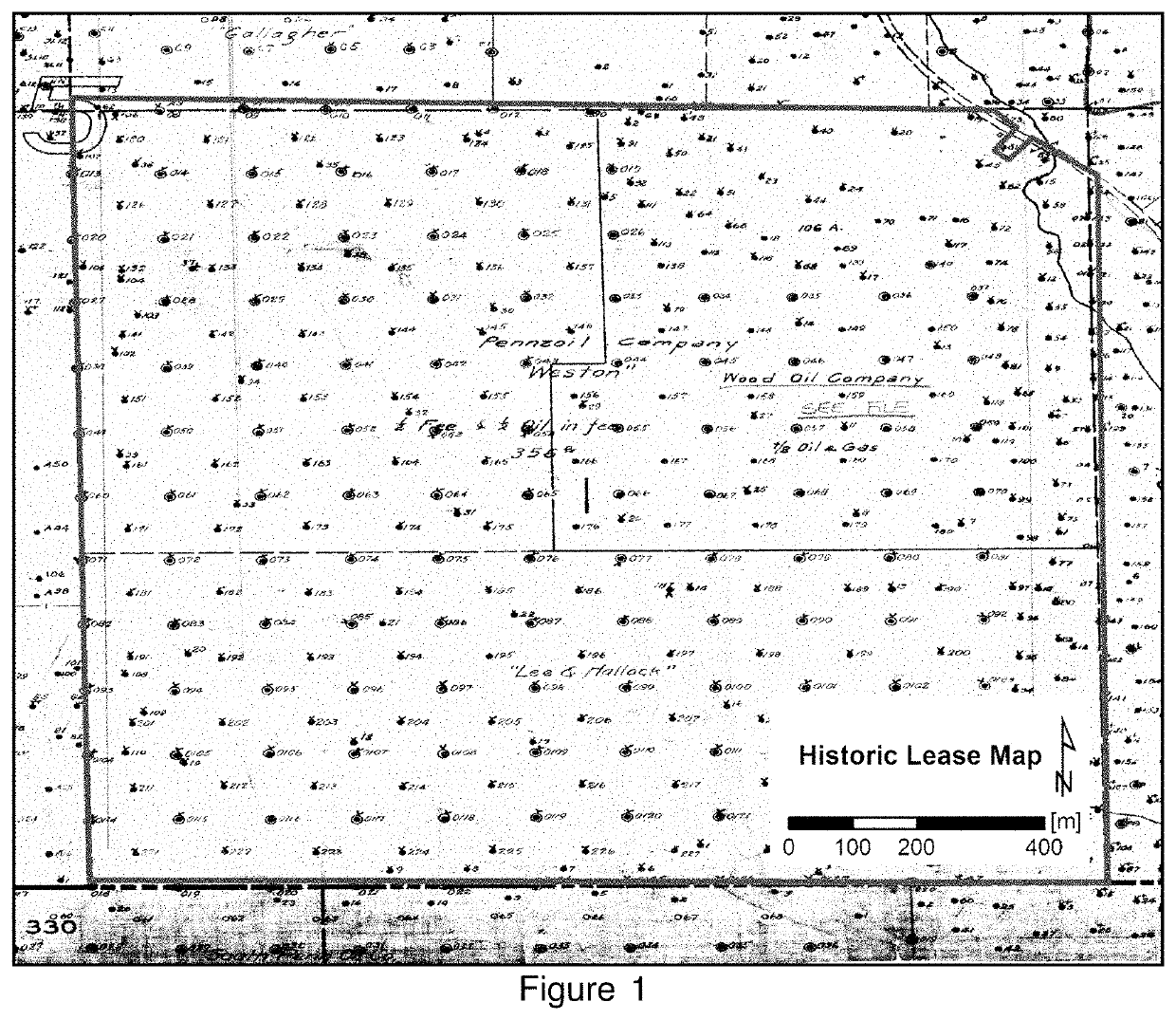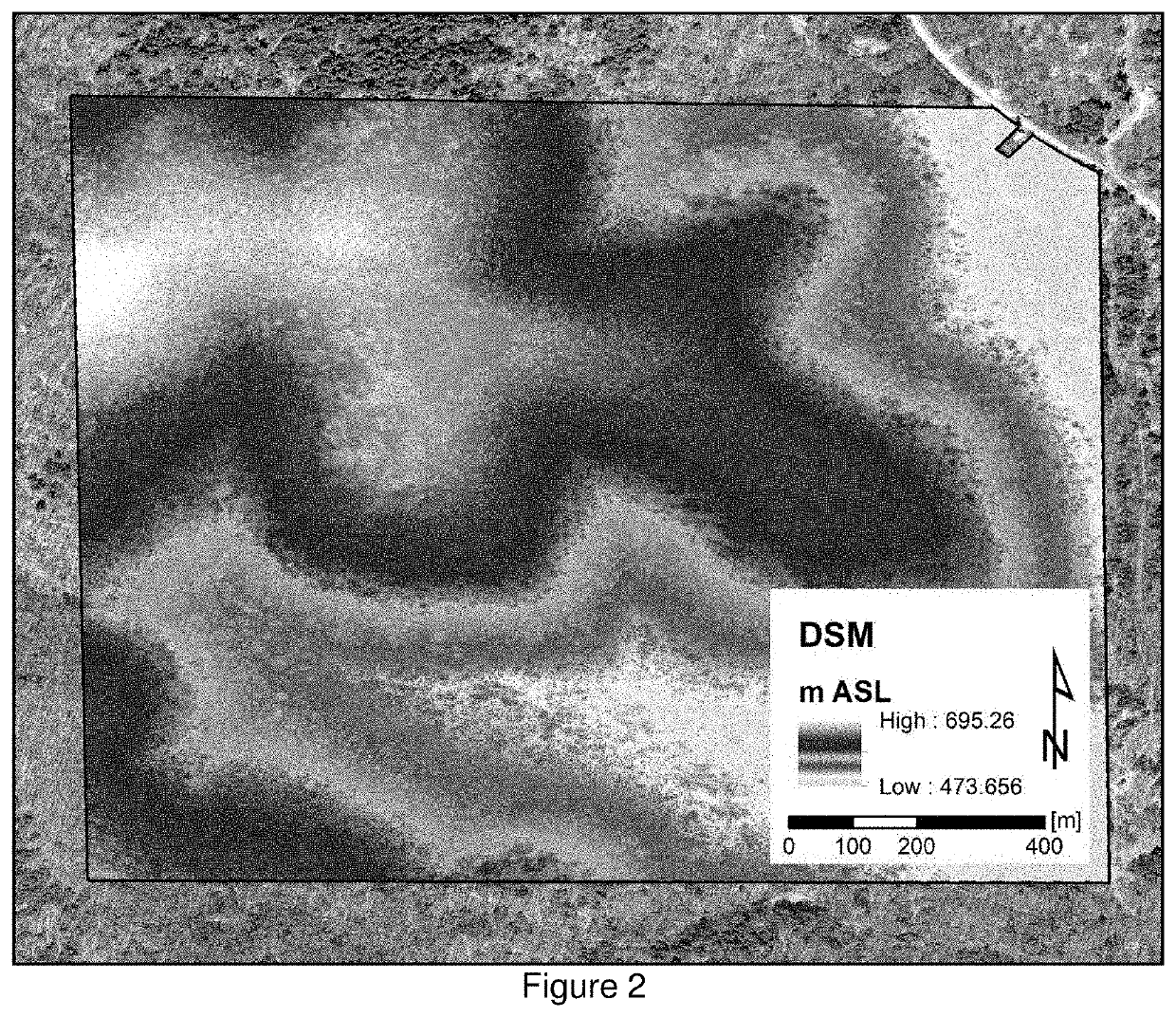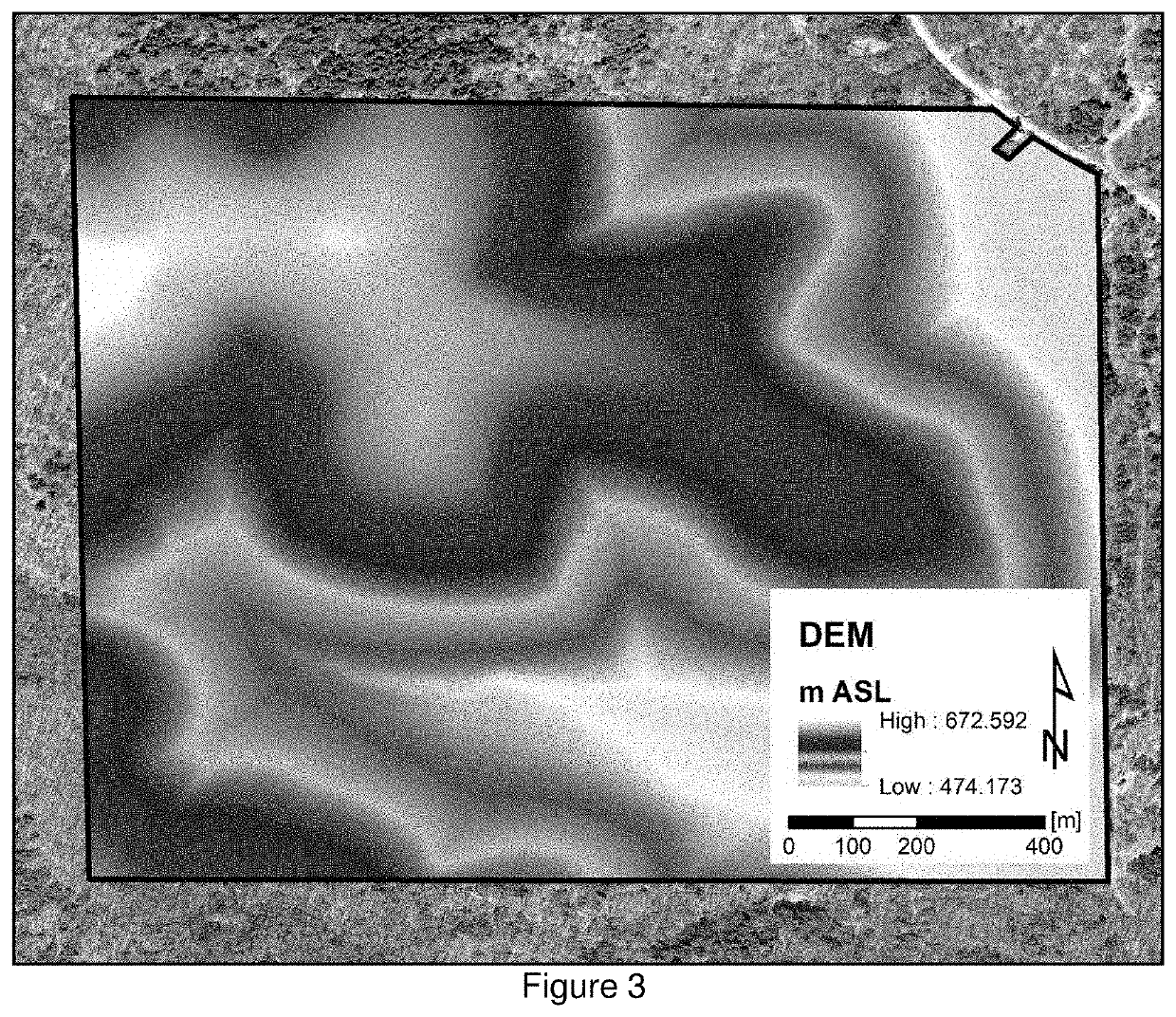System and method for unmanned aerial vehicle-based magnetic survey
- Summary
- Abstract
- Description
- Claims
- Application Information
AI Technical Summary
Benefits of technology
Problems solved by technology
Method used
Image
Examples
example 1
Detection of Well Heads
[0182]In the proof of concept study, magnetic datasets collected by a commercially-available battery-powered DJI-Matrice600 hexacopter UAV, equipped with a Geometrics Microfabricated Atomic Magnetometer (MFAM) sensor were employed, over a known Butkowsky 1-A abandoned well location near Binghamton, N.Y. The well was drilled to a total depth of 10150 ft in 2003 and plugged and abandoned in 2017; the well pad was subsequently leveled and at the time of the study area was overgrown with light vegetation that obscures any visible evidence of well presence. A series of terrestrial and UAV aeromagnetic surveys were conducted over the well site to record the magnetic expression of the well at the ground surface and at altitude, and calculated the rate of magnetic anomaly dissipation with altitude. Initially, using a standard terrestrial survey design and a, the magnetic anomaly associated with the well was observed, which was ˜18,000 nT at 0.15 m AGL. The UAV equippe...
example 2
Detection of Unexploded Ordnance
[0196]To ensure data acquisition at the high signal-to-noise ratio needed for effective isolation of relatively weak magnetic signals at elevation, it is necessary to establish the sensitivity of the MFAM unit to the magnetic interference fields generated by the operation of the gas-powered engine and powerful electric rotors of the Cicada-M UAV hybrid gas-electric system were measured. The minimal vertical separation of the MFAM unit, encased in a protective UMT MagPike ballistic foam case, from the UAV base was measured. The sensors of the MFAM were oriented in opposing direction, recording magnetic field gradient to allow for faster in-field processing of the datasets. Depending on the throttle of the engine, magnetic interference from the engine dissipated beyond the limit of detection at vertical separation of 1.7-2.4 meters, with 1.7 m correlating to the lowest engine RPM and 2.4 m correlating to the highest RPM allowed by the engine. Various te...
PUM
 Login to View More
Login to View More Abstract
Description
Claims
Application Information
 Login to View More
Login to View More - R&D
- Intellectual Property
- Life Sciences
- Materials
- Tech Scout
- Unparalleled Data Quality
- Higher Quality Content
- 60% Fewer Hallucinations
Browse by: Latest US Patents, China's latest patents, Technical Efficacy Thesaurus, Application Domain, Technology Topic, Popular Technical Reports.
© 2025 PatSnap. All rights reserved.Legal|Privacy policy|Modern Slavery Act Transparency Statement|Sitemap|About US| Contact US: help@patsnap.com



